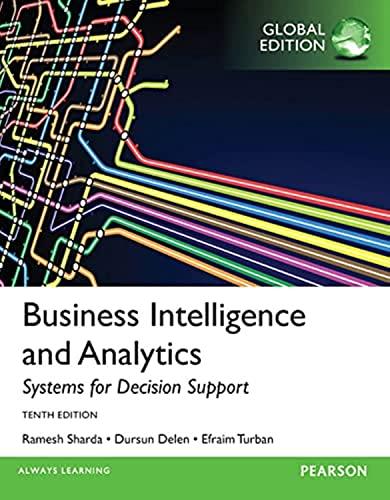Answered step by step
Verified Expert Solution
Question
1 Approved Answer
3. [Decision Trees] You own a movie theater and are trying to understand your market: what types of people frequently go to the movies?
![3. [Decision Trees] You own a movie theater and are trying to understand your market: what types of people](https://dsd5zvtm8ll6.cloudfront.net/si.experts.images/answers/2023/10/651eec1d0d6ed_341651eec1d0843a.jpg)
3. [Decision Trees] You own a movie theater and are trying to understand your market: what types of people frequently go to the movies? You start with the following dataset with data about 6 people with different age groups, income levels, and professions, and whether or not they frequently go to movie theaters. In particular, you are going to build a decision tree to predict whether or not someone is a frequent movie-goer. No High Income? Engineer? Movie Goer? T F T T 1 2 3 4 T F T F Yes Yes Yes No Recall the following definitions of entropy and information gain, respectively, which are useful for this problem: H(Z) == P(Y = y) log P(Y = y) Y IG(Z, j,t) = H (Z) H(Z[x; = t])P(x; = t) - H(Z[x; t])P(xj t). a. (4 pts) Based on the principle of information gain, which attribute is to be used for the first split? Be sure to show your computations. You can round the entropy and information gain values to two decimal places. b. (4 pts) Draw the complete (unpruned) decision tree, showing the class predictions at the leaves. Assuming you are using LaTeX, you may (i) very neatly hand draw the tree, photograph it, and include it as a figure, (ii) draw it using a graph- ics program or PowerPoint, or (iii) express the tree in a series of if statements, preferably using LaTeX's verbatim environment. c. (2 pts) From the Decision Tree constructed in the previous question, predict whether a person who has high income but is not an engineer is a movie goer.
Step by Step Solution
★★★★★
3.38 Rating (173 Votes )
There are 3 Steps involved in it
Step: 1
a To determine the attribute to be used for the first split we need to calculate the information gai...
Get Instant Access to Expert-Tailored Solutions
See step-by-step solutions with expert insights and AI powered tools for academic success
Step: 2

Step: 3

Ace Your Homework with AI
Get the answers you need in no time with our AI-driven, step-by-step assistance
Get Started


